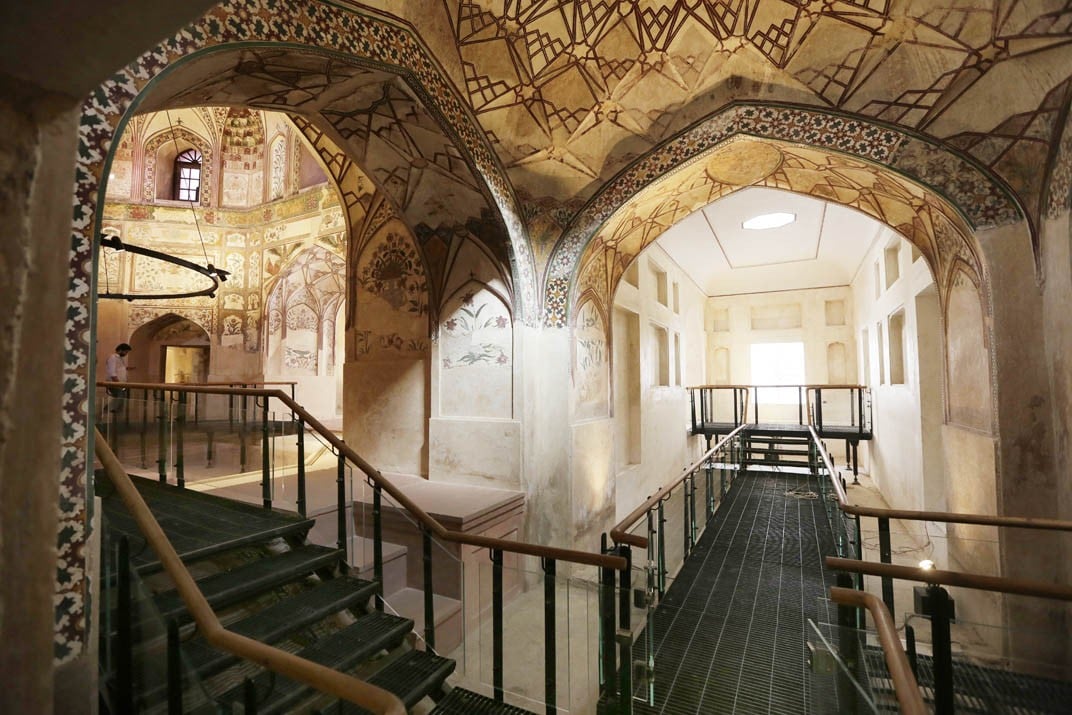
As Shahi Hamam is resurrected, it’s time to document the timeless charm of this 17th-century relic

The recent conservation moot, started by the Walled City of Lahore Authority (WCLA), has yielded some visibly commendable results. The conservation of Shahi Hamam, for instance, has returned a valuable tourist attraction to the city.
A 17th-century Mughal architectural marvel, Shahi Hamam -- or Royal Bath -- is a reminder of past grandeur. Standing amidst the towering specimens of lost royalty, the petite building reflects Turkish and Iranian architectural prowess. The Royal Trail, or the main entrance to the Hamam through Delhi Gate, has been closed for vehicles. Unfortunately, the lack of parking facilities adds to traffic mess at the Gate.
According to the Deputy Director, Marketing & Media, WCLA, Tania Qureshi, the conservation process at the Hamam is complete and open to tourists. "The work was completed mid-June. The WCLA aimed to restore the original architecture.
"Conservation work of Shahi Hamam was a tedious process," Qureshi says. "Every inch of the heavily dilapidated building needed to be worked on. Water ingress had destroyed the fresco lining; it required a lot of effort on the part of the teams to revive the remnants."
"Negligence was the sole reason for decay of Shahi Hamam," says Raza Kharal, a local TV journalist and a keen observer of the Authority’s work in the Walled City. "The place was being used as residential area for some time before the project was picked up by the WCLA."
"It is the only building of its kind in interior Lahore; it can potentially serve as a great tourist attraction," adds Qureshi. "However, in order to redeem its decaying structure, a lot of intricate conservation techniques were employed. Heavy chemicals have been used in the preservation of the original wall art [of Shahi Hamam].
"Surprisingly, the structure was not too shabby unlike some of the other buildings of the era. Shahi Hamam was almost unseen before its conservation started."
The last attempt of conservation was made in 1991 but the project was soon abandoned, until two years back, when the WCLA, supported by the Agha Khan Trust and Royal Norwegian Embassy, restarted conservation work.
"It is the only 17th-century Turkish bath house that we have, so the focus was on retrieving every available element. A large number of artifacts have been retrieved from the building," claims Qureshi.
Reportedly, the WCLA is also planning to establish a museum within Shahi Hamam.
"Shahi Hamam is a beautiful example of Turkish architecture," comments renowned artist Dr Ajaz Anwar.
He believes that the WCLA has taken a "responsible initiative" by preserving the royal structures. "Buildings have personalities," he declares. "Each building is a representation of the past. It is good to know that most of the Hamam’s interior was intact, considering the lack of attention it received."
Dr Anwar says the Hamam’s beauty is highlighted during the day, as the sun penetrates its glass ceiling. "The Hamam might have lost its purpose but its charm remains!"
During the years the Hamam remained neglected by the authorities, it was used for undue purposes. Along its exterior wall, shops (read encroachments) had been laid out. A section of Hamam served as a sewing school for young girls.
The Hamam also served as a small theatre where plays would be performed. It became a source of petty amusement, albeit of insignificance, in the former days.
One of the dilemmas of these historically significant buildings is the lack of understanding and knowledge about them. "We were stunned by the fact that many locals were unaware of Shahi Hamam’s existence even," Tania Qureshi says.
There are several buildings within the Walled City that require restoration and documentation. The artifacts recovered at Shahi Hamam are among those.
However, in order to capture public attention, campaigns are being launched by the WCLA. "We are arranging guided tours," reveals Qureshi. "The guides are the locals who have been trained and educated for the job. Hence, they know the historical and cultural importance as well as symbolism evoked by the historical Hamam.
"It is a ticketed tour; the locals have to pay Rs20 per head whereas for foreign tourists it’s Rs400."
All said and done, it is not solely the structure of the Turkish bathhouse which adds to the lure of the Hamam. Original pathway that led to the place was through the Delhi Gate, popularly referred to as Shahi Guzargah (or the royal pathway).
The vibrant spice market adjacent to the Royal Trail bustles with energy at any given time of the day. According to Jaffer Ali, a local spice vendor, the place has changed radically over the years. "It was not the way you see it today. It looked different, say, 20 years back."
Ali candidly mentions the recent efforts by the WCLA to make it a popular tourist destination. "The Authority arranges functions here."
The WCLA continues to work in the interior city, making efforts to preserve the cultural heritage of Lahore. "Presently, work has also started at the Wazir Khan Mosque," says Bilal Tahir who is in charge of Shahi Hamam.
Efforts by the Authority are evidently paying off as people have started pouring in through the Gates of Lahore "for the sake of the experience" as Qureshi puts it, eloquently.